
inca celiferos trekking
city tours cusco
IThe first day after arrival is recommended to make city tour, our tour agency organizes this every afternoon. You are picked up from your hotel between 13:30 hrs. and 13:45 hrs. You will have a guided tour of the center of Cusco tour, visit the Plaza de Armas, the Cathedral, the Temple of the Sun Koricancha-Santo Domingo, and then go out to visit the nearby ruins of Sacsayhuaman, Kenko, Puca Pucara and Tambomachay , returning to the city from 18:00 hrs. and 18:30 hrs.
El primer día a su llegada es recomendable realizar city tour, nuestra agencia organiza este tour todas las tardes. Se les recoge de su hotel entre 13:30 hrs. y 13:45 hrs. Tendrá un tour guiado por el centro de la ciudad del Cusco, visitará la Plaza de Armas, la Catedral, el Templo del Sol Qoricancha-Santo Domingo, para luego salir a los alrededores para visitar las ruinas de Sacsayhuaman, Kenko, Puca Pucara y Tambomachay,retornando a la ciudad entre las 18:00 hrs. y 18:30 hrs.
1.-The Cathedral of Cusco:
We begin the tour visiting the Cusco Cathedral, the church of the Holy Family, and the Church of Triumph.
1.- La Catedral del Cusco:
Iniciamos la excursión visitando la Catedral del Cusco, la iglesia de la Sagrada Familia, y la iglesia del Triunfo.

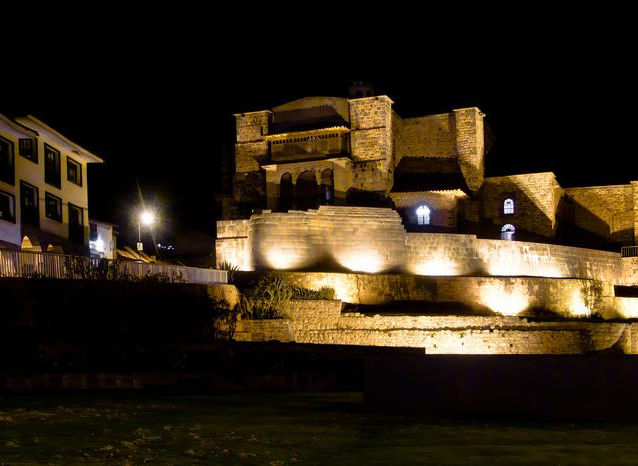

According to Inca conception, Koricancha was the religious center of Cusco, geographical and political center. The Temple of Koricancha, was where most paid homage to the Inca god Inti sun means meant qori gold center court meant its Spanish form is cori. "Kancha" means enclosed place, bounded by walls. Hence it is that the name corresponds roughly "enclosed space containing gold."
Según la concepción inca, el Coricancha fue el centro religioso del Cusco, centro geográfico y político. El templo del Qorikancha, era el lugar donde rendía pleitesía al máximo dios inca el inti que significaba sol qori significa oro cancha significaba centro su forma castellanizada es cori. "Kancha" significa lugar cercado, limitado por muros. De donde se tiene que el nombre corresponde aproximadamente "lugar cercado que contiene oro".
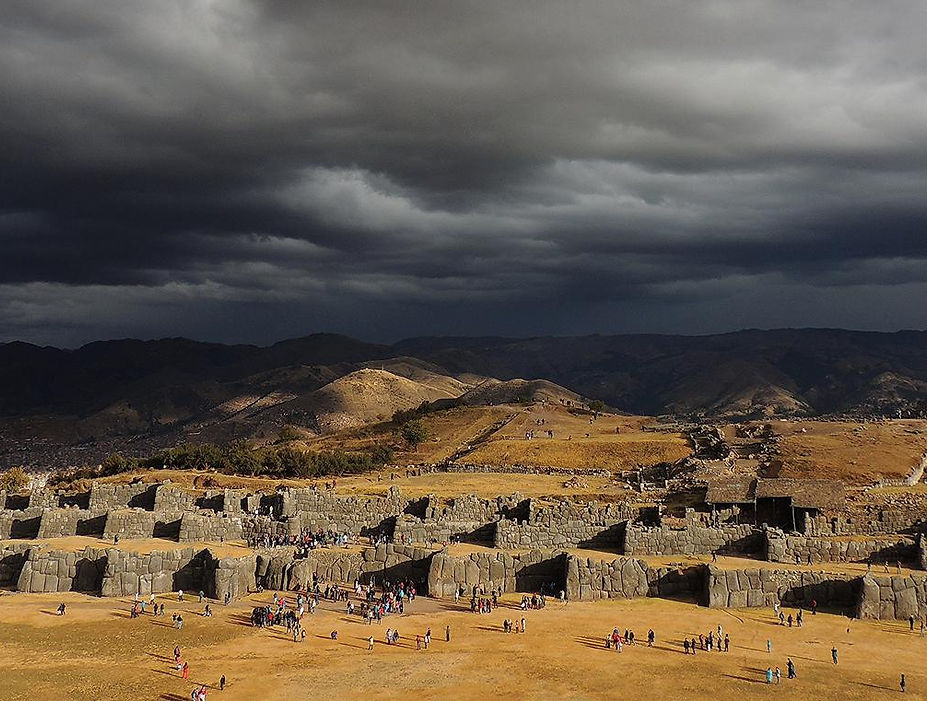
Sacsayhuaman
Sacsayhuaman (Quechua Saqsaywaman of saqsa, instead of fill and waman, hawk, ie, "the place where the hawk is satisfied") is an Inca ceremonial "fortress" located two kilometers north of the city of Cuzco. It was build during the reign of Pachacuti, in the fifteenth century; however, Huayna Capac was who gave the final touch in the sixteenth century. With the destruction of the Inca nobility disappeared from human techniques that allowed the construction of this monumental fortress or sanctuary memory; which produced the admiration of Pizarro and his men. Pedro Sancho, secretary of Pizarro, leaves a first description of the building; but the more detailed the Inca Garcilaso de la Vega (mestizo chronicler). The "ceremonial fortress" of Sacsayhuaman is with its massive walls, most architectural work that made the Incas during their heyday. From the fortress seen a panoramic view of the surroundings, including the city of Cuzco.
Sacsayhuaman
Sacsayhuamán (en quechua Saqsaywaman, de saqsa, lugar de saciarse, y waman, halcón, es decir, "Lugar donde se sacia el halcón") es una "fortaleza ceremonial" inca ubicada dos kilómetros al norte de la ciudad del Cuzco. Se comenzó a construir durante el gobierno de Pachacútec, en el siglo XV; sin embargo, fue Huayna Cápac quien le dio el toque final en el siglo XVI. Con el aniquilamiento de la nobleza inca desaparecieron de la memoria humana las técnicas que permitieron la construcción de esta monumental fortaleza o santuario; el cual produjo la admiración de Pizarro y sus hombres. Pedro Sancho, secretario de Pizarro, deja una primera descripción del edificio; pero la más detallada es la del Inca Garcilaso de la Vega (Cronista mestizo). La "fortaleza ceremonial" de Sacsayhuamán es con sus muros megalíticos, la mayor obra arquitectónica que realizaron los incas durante su apogeo. Desde la fortaleza se observa una singular vista panorámica de los entornos, incluyendo la ciudad del Cuzco.


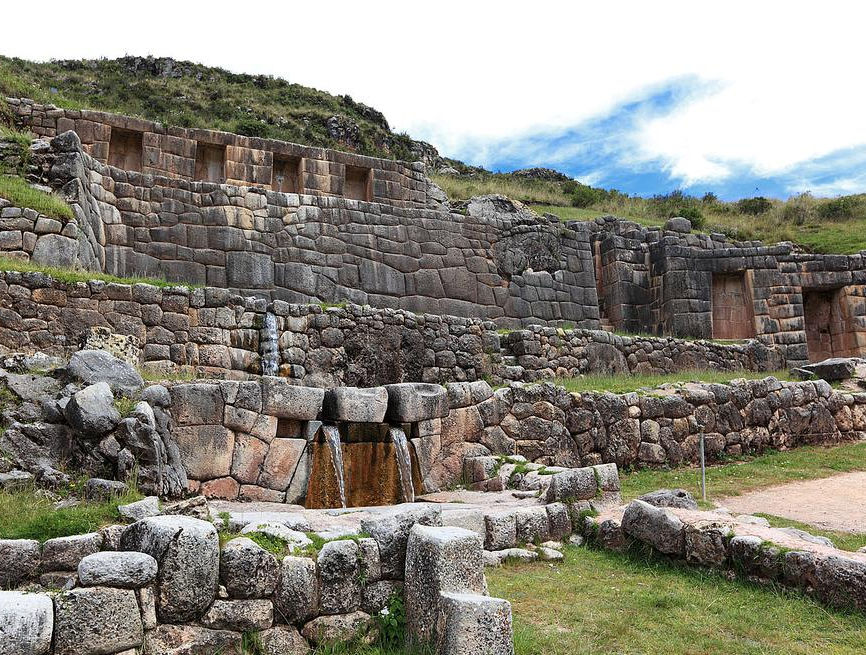
Kenko
underground Altar
Kenko Kenko or in Quechua Quinqu ("Labyrinth") is an archaeological site located in the Sacred Valley of the Incas, 6 km. city of Cuzco (5 min. northeast of Cuzco), Peru at 3580 meters. It consists of two places: the Great, who is at the foot of the path from Sacsayhuaman to Pisac; and Chico, which is 350 meters west of the above, on the hillside. This shrine is located on what is now known as the Socorro hill and covers an area of a little more square than 3,500 meters. At the time of the Inca Empire was another center dedicated to ritual and of particular interest are its semi circular amphitheater and underground galleries
Kenko
Altar subterráneo
Kenko o Qenqo, en quechua Quinqu ("laberinto") es un centro arqueológico ubicado en el Valle Sagrado de los Incas, a 6 km. de la ciudad del Cuzco (5 min. al noreste del Cuzco), en el Perú a 3580 msnm . Está integrado por dos lugares: el Grande, que se encuentra al pie del camino que va desde Sacsayhuamán hasta Písac; y el Chico, que está a 350 metros al oeste del anterior, sobre la ladera. Este adoratorio se encuentra ubicado sobre lo que hoy se conoce como el cerro Socorro y abarca un área que de un poco más de 3,500 metros cuadrados. En la época del Imperio inca fue otro centro dedicado al rito y son de particular interés su anfiteatro de forma semi circular y sus galerías subterráneas
Tambomachay
Tampumachay in Castilian or Tampumachay (Quechua: Tampumachay, resting place) is located near Cuzco, Peru. It is an archaeological site that was intended for the worship of water and the head of the Inca empire could rest. It consists of a series of aqueducts, canals and several waterfalls that run through the rocks. The amazing thing about this is that a main waterfall, the Incas created two high waterfalls, which are exactly alike. That is, if one places two empty bottles, each cascade, the two are filled simultaneously.
Tambomachay
Tampumachay en castellano o Tampumachay (quechua: tampumachay, lugar de descanso) está ubicado cerca del Cuzco, en el Perú. Es un sitio arqueológico que fue destinado al culto al agua y para que el jefe del Imperio inca pudiese descansar. Consta de una serie de acueductos, canales y varias cascadas de agua que discurren por las rocas. Lo sorprendente de esto es que de una cascada principal, los Incas crearon dos cascadas secundarias, las cuales son exactamente iguales. Es decir, si uno coloca dos botellas vacías, una en cada cascada, las dos se llenan al mismo tiempo.
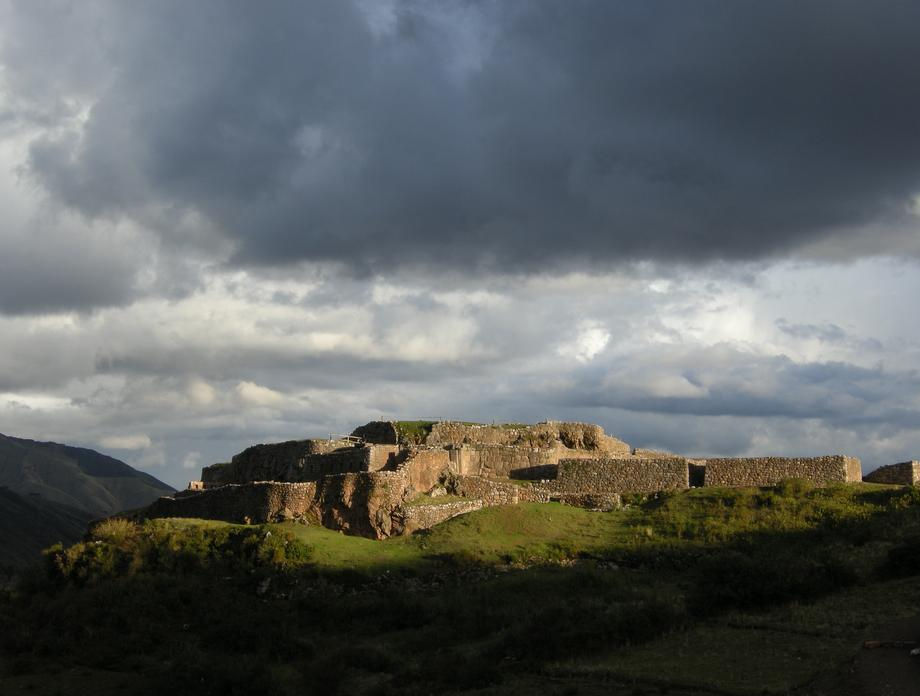
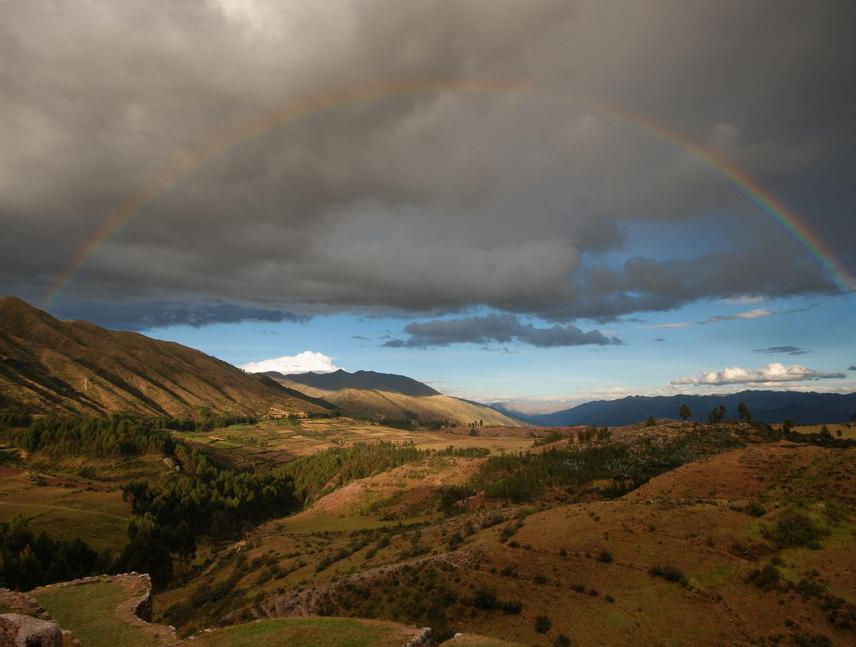
Puca Pucara
Puca Pucara is a military construction located near Cusco, Peru. This strength is composed of large walls, terraces and staircases and was part of the defensive set of Cusco in particular and the Inca Empire in general.
In the area of the archeological buildings in the capital of the extinguished empire, visiting this town. Puca Pucara is named in Quechua "Red Fort" due to the red rocks that acquire during twilight. Puca Pucara is another example of military architecture also worked as an administrative center, has platforms, superimposed terraces, stairways and passages.
Puca Pucara
Puca Pucara es una construcción militar ubicada cerca del Cusco, en el Perú. Esta fortaleza está compuesta de grandes muros, terrazas y escalinatas y era parte del conjunto defensivo del Cusco en particular y del Imperio inca en general.
En el ámbito de las construcciones arqueológicas cercanas a la capital del extinguido imperio, se visita esta localidad. Puca Pucara recibe su nombre en quechua de "Fortaleza Roja", debido al color rojo que adquieren las rocas durante el crepúsculo. Puca Pucara es otra muestra de arquitectura militar que además funcionó como centro administrativo, cuenta con andenes, terrazas superpuestas, escalinatas y pasajes.